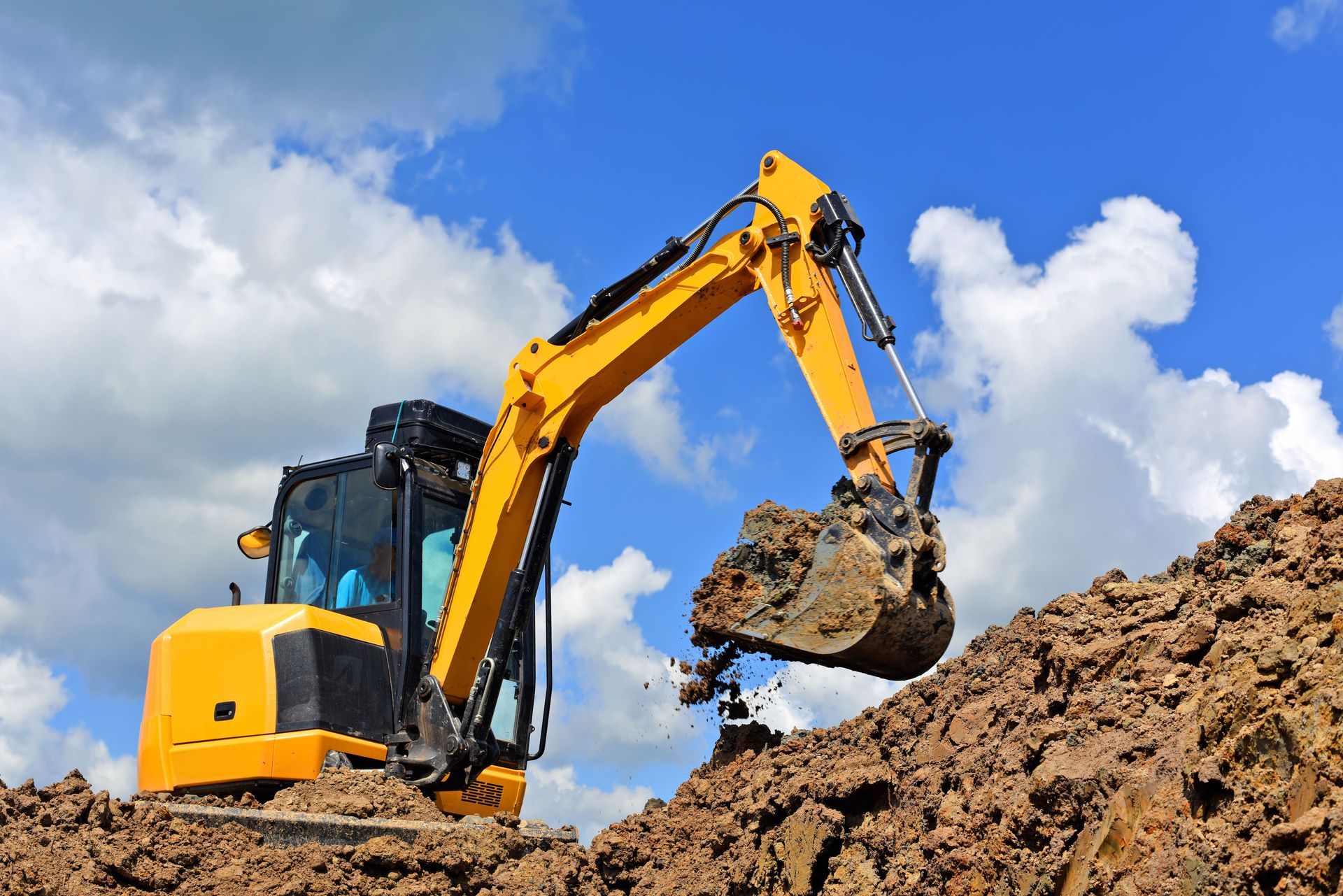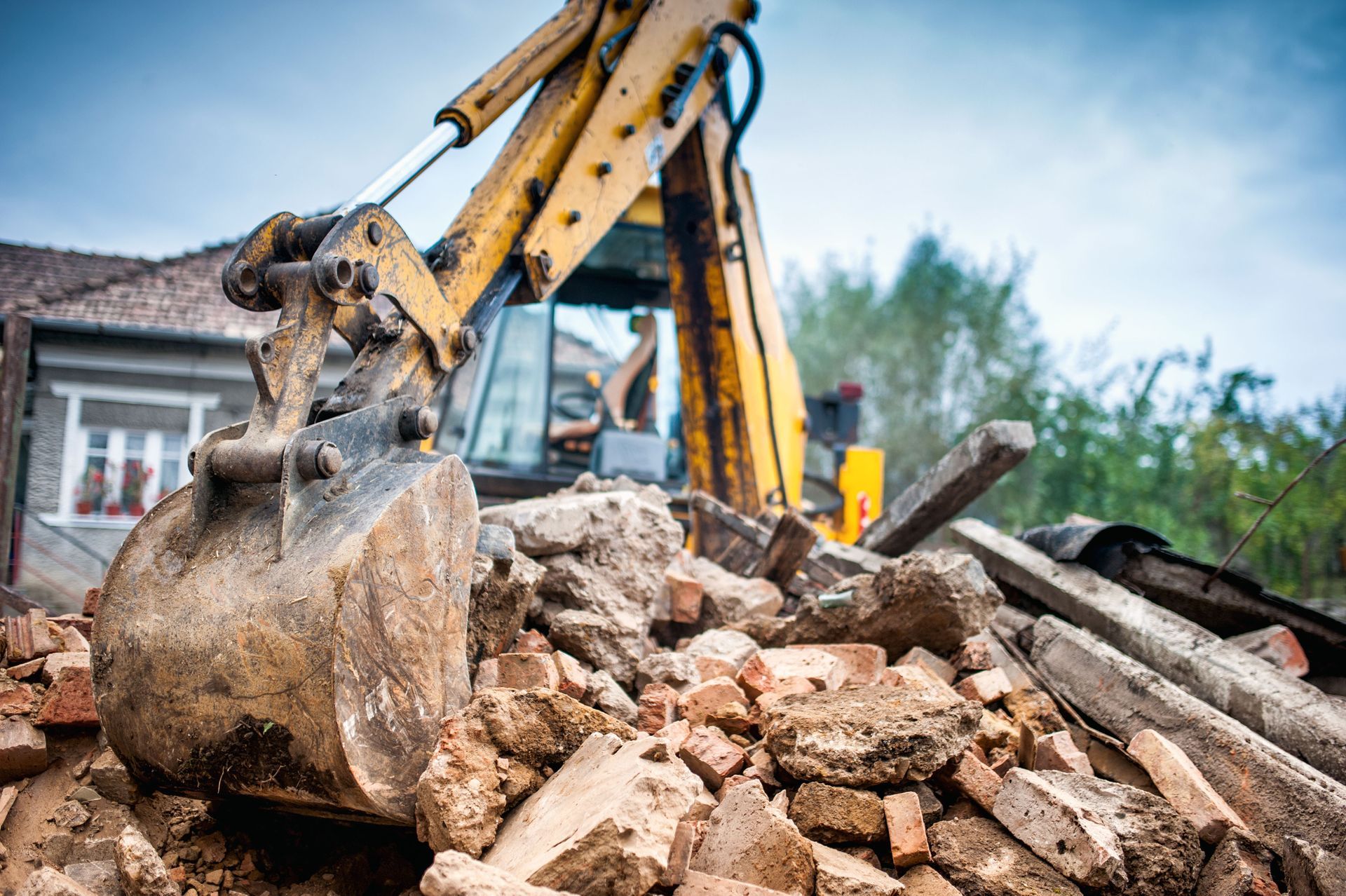August 15, 2025
When it comes to enhancing your outdoor space, few projects are as rewarding and environmentally beneficial as building a wildlife pond. These natural water features not only add beauty to your landscape but also support local ecosystems, creating a haven for birds, frogs, insects, and aquatic plants. Whether you're a homeowner with extra yard space or a landowner managing a larger property, installing a wildlife pond can bring unexpected joy and long-term ecological benefits.
If you're considering a new outdoor project and want something more sustainable than a swimming pool or decorative fountain, a wildlife pond might be exactly what you're looking for. With proper planning and the right support—often from a professional excavating contractor—you can build a pond that thrives for years to come.
Let’s explore five key benefits of creating a wildlife pond and why it could be the perfect addition to your landscape.
1. Supports Biodiversity and Local Wildlife
One of the most compelling reasons to build a wildlife pond is the immediate impact it has on local biodiversity. Ponds naturally attract a wide range of species, many of which may be declining due to habitat loss. From frogs and dragonflies to birds, bees, and butterflies, a wildlife pond becomes a crucial resource—especially during dry seasons or drought conditions.
When you incorporate native aquatic plants, marginal plants, and natural rocks or logs, you create microhabitats that serve different types of wildlife. Birds may use the pond for bathing and drinking, while amphibians like frogs and salamanders may breed and live in and around the water. Insects such as water beetles and damselflies also find their home here, contributing to the balance of the ecosystem.
Even small ponds can make a big difference. Unlike artificial water features that use chemicals and mechanical filtration, a natural wildlife pond depends on balanced planting and organic processes. Consulting with an experienced excavating contractor ensures the pond’s layout supports different habitat zones for various species.
2. Enhances Garden Aesthetics and Serenity
A wildlife pond introduces visual and sensory appeal to any landscape. The presence of calm, reflective water immediately creates a sense of peace, while plants and wildlife bring a dynamic, ever-changing element to your garden. Unlike more formal water features, wildlife ponds have a natural, often rustic look that blends beautifully with native landscaping styles.
You’ll notice seasonal shifts in your pond’s ecosystem. Spring may bring tadpoles and blooming aquatic plants, while summer sees dragonflies skimming across the surface and birds visiting for a drink. The sound of rustling reeds or the splash of frogs adds a soothing, natural ambiance to your outdoor space.
The depth and shape of the pond also play a role in its visual impact. According to Simplify Gardening, a wildlife pond should be two to three feet deep at its deepest point, with shallower zones of eight to 12 inches to support plant growth. This variation not only promotes ecological balance but also adds visual depth and interest to the pond’s layout.
Working with a qualified excavating contractor ensures that the pond is shaped properly, with gently sloping edges and a natural profile that fits the surrounding landscape.
3. Encourages Environmental Education and Observation
A wildlife pond offers a unique opportunity for learning and hands-on observation, making it an excellent addition to family homes, schools, or community gardens. Children and adults alike can observe the lifecycle of frogs, discover insect larvae, or watch birds and butterflies up close—all from the comfort of their backyard.
These small ecosystems serve as living classrooms where people can gain a deeper appreciation for the interconnectedness of nature. Watching how species interact with one another and adapt through the seasons fosters curiosity and environmental awareness, especially in younger generations.
You can also incorporate small educational elements into the design, such as stepping stones for safe observation, signage identifying different species, or plant markers that teach visitors about native flora.
When constructing a pond for educational purposes, it’s important to consider safety, especially for children. A skilled excavating contractor can help ensure the pond has gentle slopes, secure borders, and proper drainage to prevent overflow or erosion—all while maintaining a natural look and function.
4. Helps Manage Rainwater and Improve Drainage
Beyond its aesthetic and ecological benefits, a wildlife pond can also serve a practical function in your landscape: water management. As more areas become paved and urbanized, the ability of the ground to absorb rainwater diminishes, increasing the risk of flooding and runoff. Wildlife ponds provide a natural catchment area, helping to slow down and filter excess rainwater.
When located properly, a pond can capture runoff from roofs, driveways, or sloped lawns, reducing the strain on your property’s drainage systems. Plants within the pond and along its banks can absorb nutrients and contaminants from the water, making it cleaner as it reenters the ground or evaporates.
Incorporating a pond into a larger landscape drainage plan is something that’s best done with professional help. An excavating contractor can evaluate your property’s grading, soil type, and existing drainage patterns to ensure the pond not only benefits wildlife but also functions as a helpful tool for stormwater control.
Over time, you’ll find that your pond reduces erosion, promotes healthier soil, and even contributes to groundwater recharge—all while supporting local wildlife.
5. Requires Low Maintenance and Offers Long-Term Rewards
Many people are surprised to learn that wildlife ponds are relatively low-maintenance, especially when designed with ecological principles in mind. Unlike ornamental ponds with pumps and filters, wildlife ponds rely on natural plantings and biological processes to maintain balance.
Once your pond is established, it generally takes care of itself. Aquatic plants oxygenate the water, while insects and microorganisms keep populations in check. Occasional removal of excess vegetation and top-ups during dry spells may be necessary, but for the most part, these ponds are self-sustaining.
That said, proper construction is crucial from the start. An experienced excavating contractor will know how to prepare the pond base, manage soil compaction, and shape the pond to prevent stagnation and encourage natural flow. They’ll also understand how to build shelf zones for plant placement, which are vital for supporting wildlife and maintaining water clarity.
Over time, a well-designed wildlife pond becomes more than just a backyard feature—it becomes an ecosystem. You'll witness the growth of plants, the arrival of new species, and the evolving balance of life. It’s a quiet but powerful way to contribute positively to your environment with minimal long-term effort.
Creating a wildlife pond is more than a landscaping project—it’s a commitment to supporting biodiversity, improving your property, and connecting with nature. Whether you're looking to attract more wildlife, educate your children, or simply enjoy the beauty of a natural water feature, a wildlife pond offers both short-term satisfaction and long-term benefits.
With thoughtful planning and proper execution, especially with the help of a knowledgeable excavating contractor, your pond can thrive for years to come. From improving drainage to fostering a peaceful retreat in your backyard, the value of a wildlife pond goes far beyond its appearance.
Ready to transform your outdoor space into a thriving habitat? Contact Wick & Associates Inc to get started on designing and building your own wildlife pond. Our team understands the technical and ecological elements needed to create a sustainable, beautiful pond that supports local wildlife and enhances your landscape.



